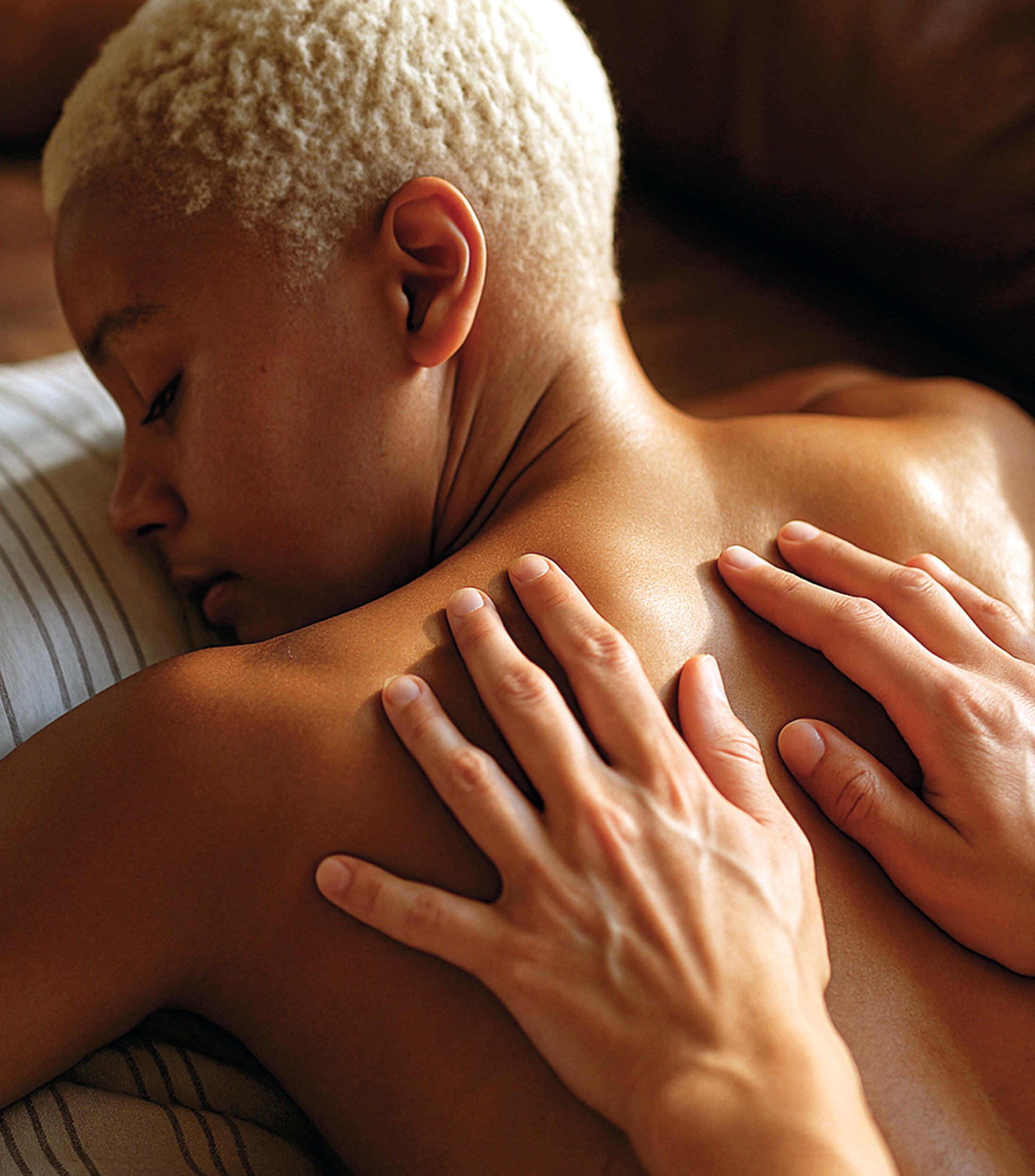Anorgasmia and Gender
Kinds of Anorgasmia
Can You Have Situational Anorgasmia?
Causes of Anorgasmia
Orgasms Feel Different for Everyone
How to Treat Anorgasmia?
Therapy
Luxury Sex Toys
When people say "sex," they often mean "orgasm." However, not everyone can achieve orgasm. And for people who can, it isn't always the mind-blowing fireworks popular media would have you believe.
Physiological conditions, medications, trauma, and hormone changes can all affect your ability to orgasm. While treatments are available, it may be just as important to learn to enjoy an entire sexual experience rather than pinning all your desires in a few seconds.
What is Anorgasmia?
What does anorgasmia mean?
The Mayo Clinic defines anorgasmia as "the medical term for regular difficulty reaching orgasm after ample sexual stimulation." There are several kinds of anorgasmia affecting you, whether you have a penis or a vagina.
Anorgasmia and Gender

People with vaginas are more likely to experience anorgasmia symptoms. Around 5 to 10% of women have primary or lifelong anorgasmia, which means they never experience orgasm.
As we'll address more below, most people with vaginas can't orgasm from vaginal penetration alone. That means that most people with vaginas will need partners willing to stimulate their clitoris before penetrating.
Around 8% of men experience anorgasmia of some kind during their lifetime. Whereas people with vaginas are more likely to experience anorgasmia when they are young, people with penises are more likely to experience it as they age.
Read: 5 Reasons Why You Should Try A Double Penetration Orgasm
According to a 2018 study, women need around 14 minutes of stimulation to orgasm with a partner. Men, by contrast, usually orgasm within 5 to 10 minutes following penetration. It may lead to people with vaginas believing they have anorgasmia when they may need more stimulation.
Kinds of Anorgasmia
Anorgasmia has two main subtypes:
-
Primary or Lifelong refers to someone who has never been able to orgasm, even during masturbation.
- Secondary or Acquired: This refers to an inability to orgasm after having been able to orgasm previously. It may refer to an inability to orgasm only after partnered sex or when masturbating as well. This kind of anorgasmia usually appears after a specific event. Trauma, grief, surgery, childbirth, and menopause can all trigger anorgasmia.
Read: How to masturbate with Sex Toys?
Can You Have Situational Anorgasmia?
Technically, being able to orgasm during some sex acts and not others could be considered a type of anorgasmia. However, keep in mind that only 25% of women regularly experience orgasms from vaginal stimulation alone. If you are someone with a vagina, you may require clitoral stimulation to completely normal orgasm.
For anatomical reasons, some women cannot receive sufficient stimulation from vaginal stimulation alone. Many researchers believe that women who can orgasm from vaginal stimulation alone are reacting to stimulus of parts of the clitoris that are not visible from the outside.
Some people find they only orgasm when with specific partners or prefer penetration or oral sex over the other. Everybody is different, and if a particular sex act feels more satisfying than another, that's completely OK.
Causes of Anorgasmia
Anorgasmia can be caused by several factors, including physical illness or psychological trauma.
Societal Factors
Society often stigmatizes people who like sex, especially people with vaginas. A lack of body positivity is associated with an increased risk for anorgasmia in women. People with penises may feel pressure to "perform," leading to more anxiety during sex and ultimately anorgasmia.
Pelvic Floor Dysfunction
The pelvic floor is an area of muscles that hold up pelvic organs such as the bladder, rectum, uterus, or prostate. For people with vaginas and people with penises, and uncoordinated pelvic floor can lead to anorgasmia.
Pelvic floor dysfunction can also cause incontinence issues, so if you experience these, it may be something to bring up with your healthcare professional when discussing anorgasmia.
Surgical Complications
Surgical complications may cause anorgasmia. For people with penises, surgeries that carry a risk of anorgasmia include prostate surgery. For people with vaginas, this could be surgery on the uterus or vulva or, of course, childbirth.
Painful Conditions
Certain medical conditions can cause intercourse to be painful and thus less likely to induce orgasm. For people with vaginas, these can include:
- Urinary tract infections
- Yeast infections
- Vaginitis
- Endometriosis
- Sexually transmitted diseases
For people with penises, conditions that can cause intercourse to be painful and lead to male anorgasmia include:
- Sexually transmitted diseases
- Foreskin inflammation
Certain Medications
Some medications may make it more difficult to achieve orgasm or lower libido in general. A few medicines with this potential side effect include:
- Blood pressure medication
- Hormonal Supplements
- Birth control
- Antidepressants
- Anti-anxiety medications
- Antipsychotics
Read: How To Deal With a Partner With Low Libido?
Relationship Issues
Feeling unsure about a relationship can lead to the sex being less likely to bring you to orgasm. Of course, not all people who experience anorgasmia have relationship difficulties, but it is worth addressing if it could be the cause.
Orgasms Feel Different for Everyone

People with vaginas can often miss when they've experienced an orgasm because it doesn't feel as intense as the media would have them believe. It doesn't always have an outer manifestation as clear as the one in people with penises.
For some people, the release of Pleasure during an orgasm feels great, but it isn't dramatic. Avoid comparing your orgasm experience to fictional ones.
Orgasms Aren't the Whole Story.
Focus on the Whole Experience
Orgasms are fun when they happen. However, it may be beneficial to focus less on orgasms and more on enjoying sex in the moment. Taking away the pressure may help you orgasm more easily.
Sex has many benefits besides the discrete (and often exaggerated by media) orgasm. After all, orgasms last a few seconds, while the foreplay and cuddling after can last much longer. Shouldn't it all feel fantastic?
Sexual stimulation that never leads to orgasm can still feel great. Touching the bare skin of your partner, regardless of whether you orgasm later or not, releases feel-good hormones that can help you grow closer to them.
Patience is Key
One of the best methods how to cure anorgasmia is to take your time with sex. Most people need more stimulation to orgasm than movies would have you believe. Enjoy the journey.
If your partner is experiencing anorgasmia, do not be frustrated when your best efforts do not lead to orgasm. Be gentle and patient with them, and be willing to try new things they think could help.
For example, if they like oral sex, build up your stamina to see if more extended stimulation periods could help lead to orgasm. Be willing to try new techniques and toys.
Read: All the Benefits of Orgasms to your Life
How to Treat Anorgasmia?
Therapy
Sex therapists and pelvic floor specialists can help you identify strategies to increase your sexual stimulation. There are also sex therapists that can treat couples together.
Luxury Sex Toys

Sex toys are a great way to introduce increased stimulation during sex and raise your chances of orgasm. We happen to have a great selection of toys that serve this purpose, but we'll highlight two here.
For Her: Apex
The Apex offers customizable suction to increase blood flow to the clitoris, bringing an orgasm more within your grasp. As a bonus, the handle doubles as a g-spot hitting dildo.
For Him: Arvos
The Arvos stimulate the entire shaft of the penis and deliver concentrated vibration. It is an excellent option for people experiencing a lack of sensitivity in the penis.
For Couples:
Sex toys can help you build intimacy, pleasure, and arousal between you and your partner. It is also a terrific way to become closer to them. Observing them caress and move a toy over their bodies adds to the excitement, sensation, and closeness you and your partner can experience together.
Conclusion
Anorgasmia can be treated. However, it's also important to remember that an orgasm is not the end-all, be-all of sex or relationships. Make sure that you enjoy all the intimacy that comes with sex, not just waiting for a splashy orgasm.
References
Anorgasmia in women. (March 2020). Mayo Clinic.
Prevalence and related factors for anorgasmia among reproductive aged women in Hesarak, Iran. (January 2011). Clinics.
Sexual Dysfunction. (October 2005). Focus: The Journal of Lifelong Learning in Psychiatry.
Orgasmic Latency and Related Parameters in Women During Partnered and Masturbatory Sex. (October 2018). The Journal of Sexual Medicine.
Predictors of female sexual dysfunction: a systematic review and qualitative analysis through gender inequality paradigms. (June 2018). BMC Women's Health.
Pelvic Floor Dysfunction. (May 2020). Cleveland Clinic.
All About Orgasms: Why We Have Them, Why We Don't, and How to Increase Pleasure. (September 2014). Our Bodies Ourselves.
 Vibrators
Vibrators Toys for Women
Toys for Women Toys for Men
Toys for Men Couples & Partners
Couples & Partners



Share
Get Ready for Round 2 - How to Reduce Refractory Period
All of the Benefits and None of the Feelings - How To Be Friends With Benefits?